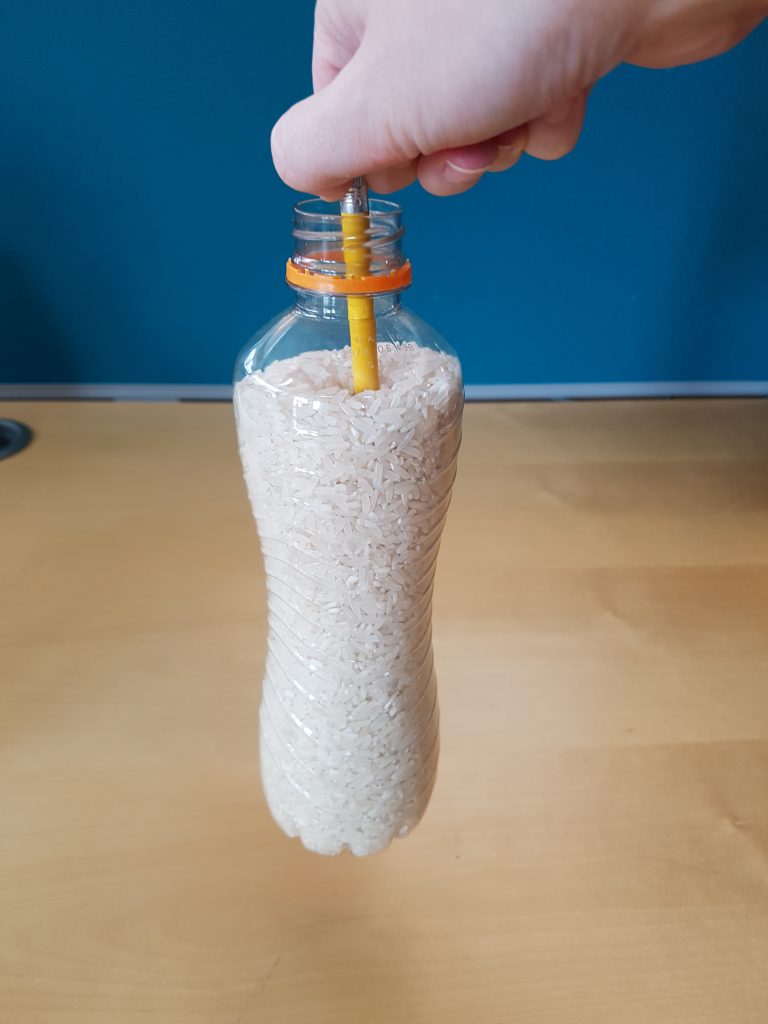Our #TryThisTuesday this week, is a challenge for you. The task is to fill a dry bottle with rice and lift it up using only a pencil.
Have a go or challenge your friends, once you think you’ve cracked it (or given up) scroll down to see how we did it!

The Solution
Take the lid off the bottle and push the pencil half way into the rice. Take the pencil out again and push it back in, repeat this about 10 times. Eventually, when you pull the pencil to take it out, the bottle will lift up with it!

This occurs due to the force of friction acting on the pencil and holding it in place. When you first pour the rice into the bottle, it will arrange itself with lots of gaps but every time you insert the pencil you push the rice down making it more compact or dense. Some grains may even break or change shape under impact with your pencil. The more you do this, the greater the surface area of rice that comes into contact with the pencil. This gives a greater force of friction. Friction is a force of resistance between two objects when they move past each other. The force is so strong at this point that it doesn’t allow the pencil to slip past the rice and so the rice (and the bottle) moves with the pencil as you lift it.

In the Real World…
This works in a similar way to quicksand. If you were to step onto quicksand, you would compact the particles, making them move closer together and lock around your foot, pulling you in. The friction makes it difficult for you to pull your foot out. Don’t worry too much though – quicksand is much denser than a human being so you wouldn’t be able to completely sink in it. As we learnt from our ketchup packet submarine and the oil and water experiment – less dense substances float above denser substances so you would stay above the surface of quicksand!